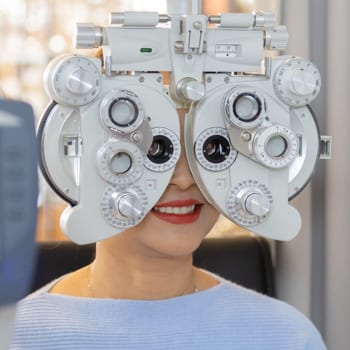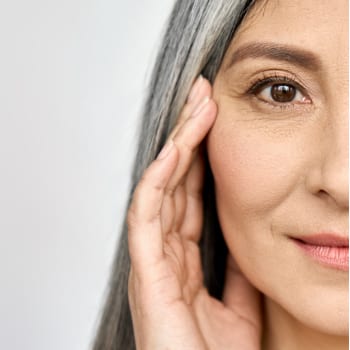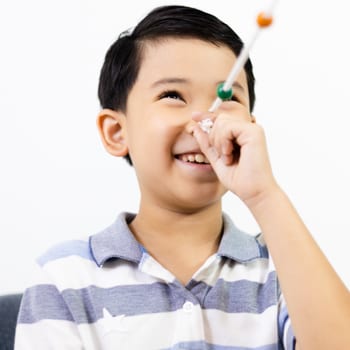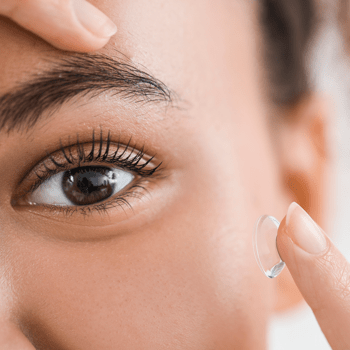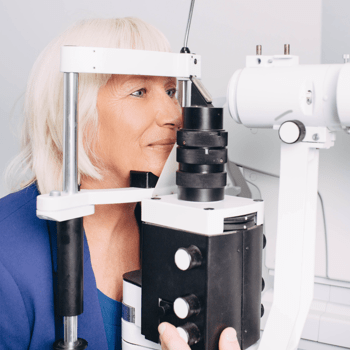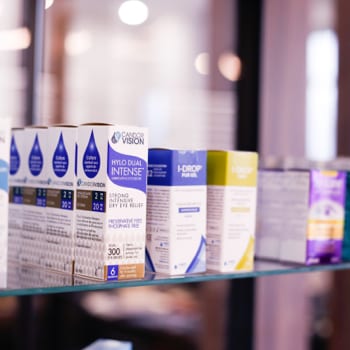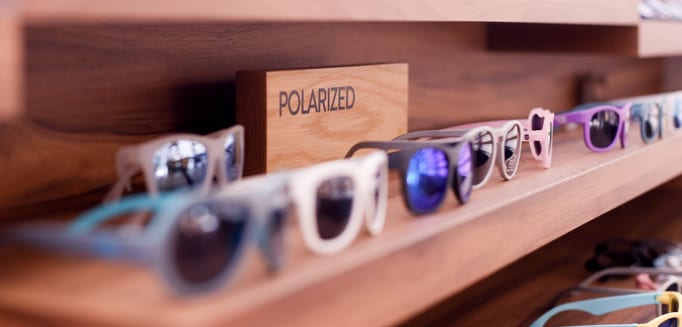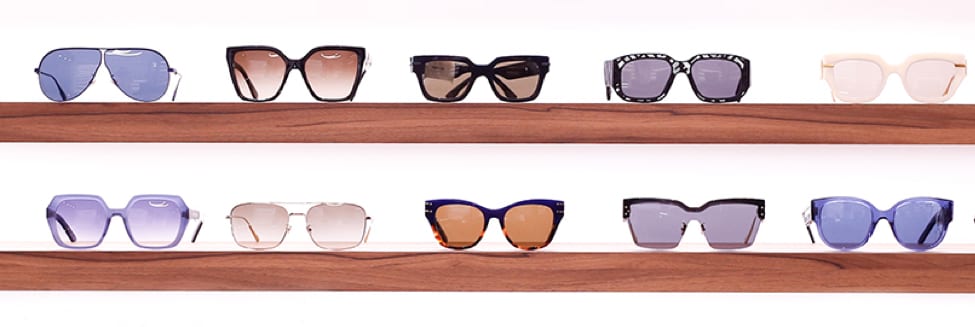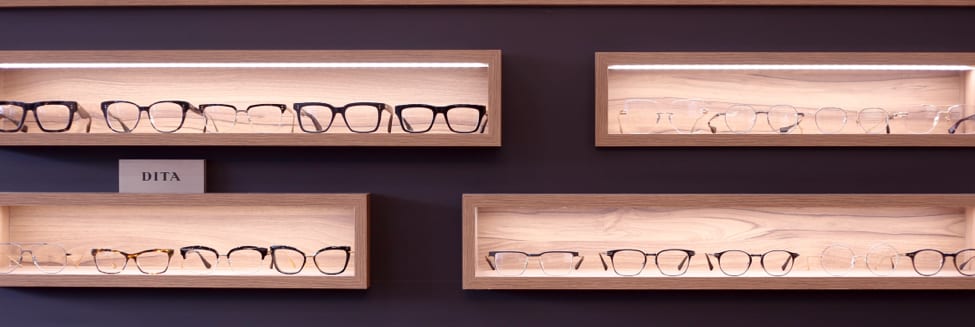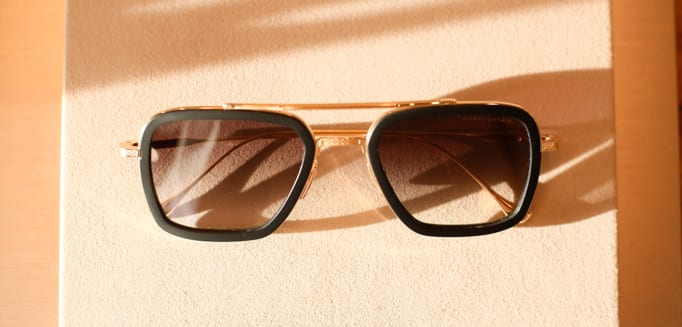Dry eye is a common eye condition that affects as many as 30% of Canadians and is trending upwards. Some research has shown that many people with cataracts will also have dry eye. Does this mean that dry eye could be causing cataracts?
Luckily, the answer is no, dry eye does not cause cataracts. Cataracts and dry eye sometimes occur together because people prone to dry eye are also usually at higher risk for cataracts.
What is Dry Eye?
Dry eye is an eye condition that occurs when your eyes can’t produce enough high-quality tears to keep the eye’s surface lubricated. It is estimated that as many as 30% of Canadians have dry eye.
The risk of developing dry eye increases as you age, but other factors can put you at a higher risk of developing dry eye. For example, hormonal changes may make you more susceptible to developing dry eye, which is why women are more likely to develop dry eye than men. Other risk factors include using certain medications, smoking, and living in a dry climate.
Symptoms of dry eye include:
- Eye redness
- Stinging or burning eyes
- Eyes that feel gritty or like something is stuck in the eye
- Itching
- Excessive tears
If you believe that you have dry eye it is important to consult your optometrist and to schedule a comprehensive eye exam.
What are Cataracts?
A cataract occurs when the clear lens in your eye becomes cloudy. This cloudiness can cause increasingly worse vision as the cataract gets worse. While aging is the most common cause of cataracts, UV damage, eye trauma, and certain medical conditions like diabetes can also cause cataracts.
Cataracts are common in individuals over the age of 65 and are one of the leading causes of blindness worldwide. Luckily, cataracts can be diagnosed through a simple Dilated Eye Exam and removed surgically.
Optometrists recommend that individuals at risk for cataracts should schedule a comprehensive eye exam every 1-2 years. Keeping up with regular eye exams allows eye care professionals to diagnose and treat cataracts before permanent vision damage occurs.
Some of the symptoms of cataracts include:
- Cloudy or blurry vision
- Double vision
- Seeing halos around lights
- Poor colour vision
- Increased sensitivity to light and glare
- Problems with seeing at night
The Link Between Dry Eye and Cataracts
While we know that dry eye can’t cause cataracts, these two eye diseases frequently occur at the same time and can influence one another. However, research has shown why that is. Some reasons why cataracts and dry eye occur at the same time are demographic overlap and lifestyle factors.
Demographic Overlap
The biggest reason why dry eye and cataracts frequently occur in the same people is that the people at high risk of developing dry eye are also at high risk of developing cataracts. The biggest risk factor for developing both dry eye and cataracts is age, with anyone over the age of 65 being at an elevated risk of developing both diseases.
Another factor is that women are more likely to develop cataracts and dry eye than men. Hormonal changes in older women associated with menopause can have drastic impacts on a woman’s vision, leading to higher levels of eye disease in women.
Some health conditions also lead a person to be more likely to develop dry eye and cataracts. Diabetes has been linked to the risk of developing dry eye disease and cataracts.
Lifestyle Factors
The second reason why someone might develop dry eye and cataracts is lifestyle choices. For example, things like smoking can have long-term impacts on eye health that may lead to the development of both dry eye and cataracts.
It has also been noted that some medications can increase the risk of developing both dry eye and cataracts.
Another way that your cataracts and dry eye can interact is through eye care. When receiving ocular surgery for cataracts, the surgery and recovery may worsen dry eye symptoms, making it look like the surgery caused the dry eye, even if that is not the case.
Treating Eye Diseases
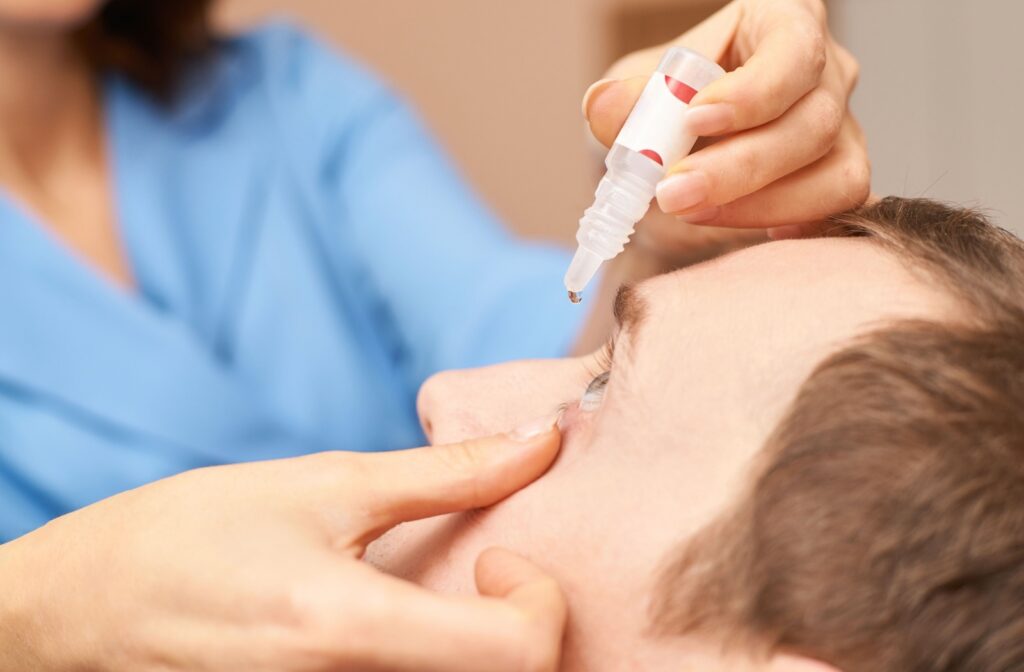
While leaving dry eye and cataracts untreated can have severe side effects, leading up to vision loss, this does not have to be the case. Your optometrist can recommend a custom-made treatment plan that best suits your needs.
Common management for dry eye disease includes eye drops and prescription medications. If these do not work, punctal plugs may be inserted into the tear ducts. Foresee Eyecare offers extensive dry eye TREATMENTS and THERAPY, which includes in-office procedures such as Intensed Pulse Light (IPL) therapy, RadioFrequency, and MiBo ThermoFlo to provide you with relief for your dry eye.
Foresee Eyecare also offers a variety of treatment options for cataracts. Early-stage cataracts can be treated with prescription contacts or eyeglasses. If cataracts progress enough that glasses and contacts no longer help, cataract surgery may be required. During cataract surgery, the surgeon will remove the damaged lens in the eye, and replace it with a clear, artificial lens.
Maintaining Your Eye Health
The first step to maintaining your eye health is booking a comprehensive eye exam. Eye exams allow your optometrist to understand your personal eye care needs and recommend treatment plans customized to you.
At Foresee Eyecare we want to help you maintain your eye health, which is why we offer dry eye therapy and cataract management plans. Our expert team at Foresee Eyecare would be more than happy to help you feel confident in your vision. Book an appointment at any of our locations today!


